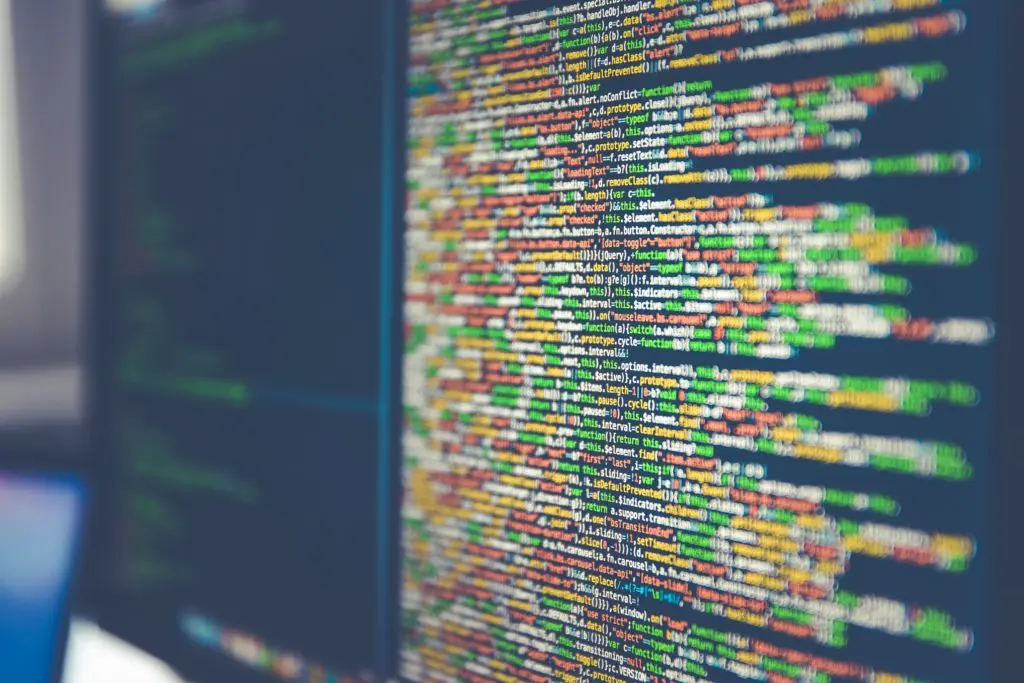Have you ever wondered what is the difference between front-end and backend development? If you’ve ever looked into software development, you may have come across these terms without knowing what they mean.
The simplest explanation is that front-end is what you see in a program. Back-end is what does all the table data work behind the scenes. Both areas require knowledge of programming, and both are essential to having functional software.
Do both kinds of programming styles require the same knowledge? Well, not quite. For the most part, every developer has some understanding of front-end and back-end development, but when it comes to building your app, it’s better if you can find a specialist of one or the other.
Let’s take a closer look at the difference between front-end and back-end development.
TLDR; Contents
The Use of Different Coding Languages

Programmers have their favorites when it comes to which language works best. C++ and JavaScript can be more cumbersome and unwieldy, but they can handle tasks of any complexity. Python and Ruby emphasize convenience and speed, but they do so by sacrificing customization. Some languages, like Swift, are limited to Apple products.
Why do all these languages matter? Because some work better for the front-end while others work better for the backend.
What Is Back End?
Imagine the following scenario: you go to log into your bank account, but you forgot your password. After clicking the “forgot password?” link, the bank sends a reset link to your email. You follow that link, go through a few steps, and boom—a new password that you can use to log in.
All of these steps require the app to access tables of data. First is user information, where your name and account are linked to a username. Once you forget your password, the app has to access a new table for temporary passwords, then another table for resetting the password. All of that communicates with your user account to update the information.
For a bank with potentially millions of users, proper table organization is crucial. Back-end developers are responsible for making sure all tables can properly communicate with each other and send your information throughout the program.
Tables are important for keeping a program running quickly. Efficient data organization is what keeps your account from having to download and access all the other accounts out there so yours is recognized as unique. An example of bad design is Bitcoin, where each block in the chain has to communicate with every single other block before any transactions can occur, making for slow transactions that require massive energy consumption.
A good back-end developer may not make a program look pretty, but they will ensure it can be used by many people at once without crashing or heating up the user’s phone battery.
What Is Front End?
Once the tables are all in order, the next task is to make them accessible to the app’s users. If we return to our bank app example, front-end development is turning all those complex operations into nice-looking buttons and links for you to click.
Front-end development comprises styling, layout, and accessibility. The fact that you can read this blog in a nice, clean window with classy fonts and colorful headers is the result of front-end development. The languages required in front-end development tend to be more of the creative types like Ruby and Python—languages that shorten commands by using an established library.
While any decent developer will have lots of experience building programs, front-end developers tend to be a little more limited in their abilities. While back-end developers have a handle on all programming languages throughout an architecture, front-end developers usually stick to just a few languages they need for most projects.
A good developer on the front end is crucial to making your program look and feel just right. They often have experience in UX/UI best practices and can advise you about how to keep your app in compliance with ADA requirements.
What Are Full Stack Developers?
The difference between front-end and back-end developers is how they approach software development. Full-stack developers, however, know their way around both front-end and back-end development. They can use multiple programming languages to build an entire program from beginning to end.
For the most part, a full-stack developer is someone who’s been working in development for many years. They charge higher rates and can handle projects faster.
Finding the Right Developer for Your Project

This starts with some basics of marketing and branding which, if you’re about to drop thousands on custom software, you’re likely to already have in place. Know brand styling guidelines so that your developer doesn’t have to guess what you want.
You should also run through use case scenarios to define exactly how each type of user’s experience will go. What permissions will you be assigning? What kind of data needs to be stored for each user’s account? Does the app need to be connected to the internet to work? Can it be built as a native app that works all the time?
By answering these basic questions, you’ll have a much easier time communicating with your developer. Without those answers, you’ll be paying top dollar for consultation services.
It’s also worthwhile to define how you want your software laid out. Wireframes are a great, free way to do this. With nothing but black and white, you’re forced to examine spacing and symmetry long before worrying about how color affects the entire project.
Hiring a Studio vs. Freelancers
Once you’re ready to go, it’s time to assemble your team. There are two ways of going about this: either find a design studio and sign a contract with them or look online and build your own team of freelancers. While it’s cheaper to take the latter route, there’s a lot more risk (and headache).
If you go with a design studio, you’ll have someone to take the head of your project and communicate with the rest of the team. The advantages here are obvious—you’ll have a front-end developer and a back-end developer, plus any other personnel the project requires.
Having the right team is an important part of any successful software undertaking. Make sure yours is complete.
Ready to get started planning your next app?
Click here for a free consultation with our developers.




